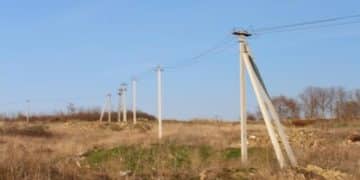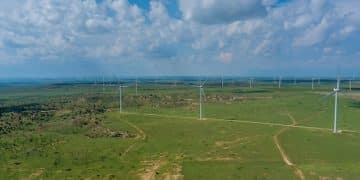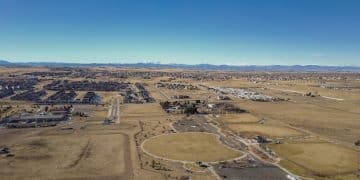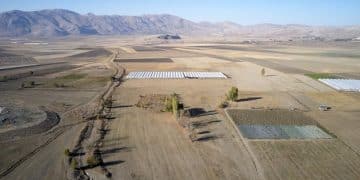Grid stability research 2025: what to expect this year
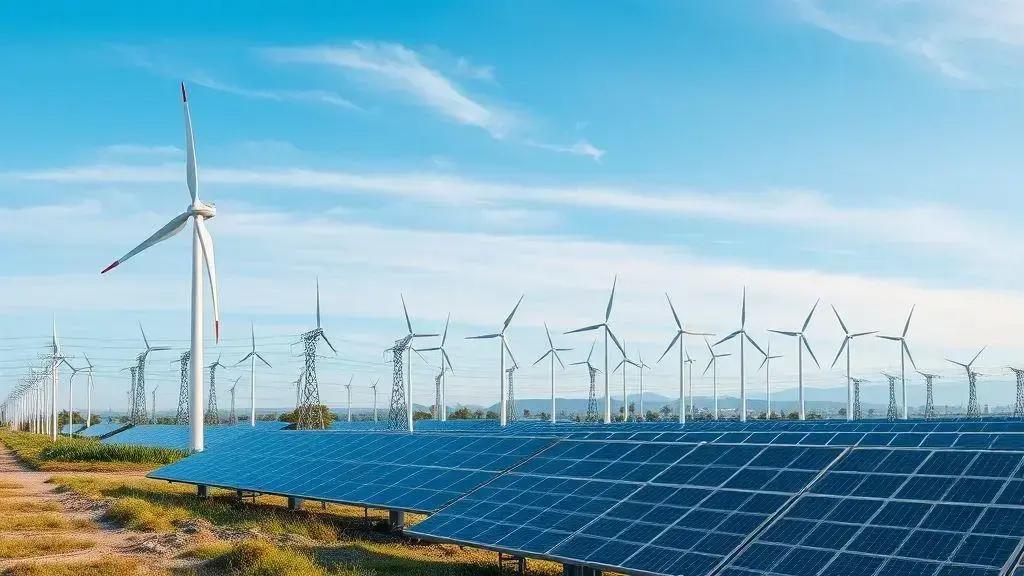
Grid stability research focuses on maintaining a reliable power supply by integrating emerging technologies, enhancing energy efficiency, and promoting decentralized systems to adapt to increasing energy demands.
Grid stability research 2025 is set to play a pivotal role in how we manage and distribute energy. Have you ever wondered how stability impacts your daily life? Let’s dive into its relevance and advancements.
Understanding grid stability and its importance
Understanding grid stability is essential for maintaining a reliable energy supply. It ensures that the flow of electricity remains balanced, preventing outages and maintaining quality. As energy demands rise, especially with renewable sources, analyzing stability becomes crucial.
What is grid stability?
Grid stability refers to the ability of the power system to maintain a continuous supply of electricity. A stable grid can recover from disturbances like failures or sudden changes in demand.
Why is grid stability important?
Without a stable grid, power interruptions can occur, leading to economic losses and inconveniences. The growing integration of renewables like solar and wind makes stability even more vital because these sources can fluctuate in power generation.
- Limits outages
- Enhances energy quality
- Supports renewable integration
- Boosts economic efficiency
Moreover, a stable grid helps to ensure that every household and business receives electricity consistently. When people understand the importance of grid stability, they can advocate for better energy policies.
In summary, grid stability is not just a technical issue; it’s a fundamental aspect of modern society. Maintaining this stability affects economic growth and our daily lives.
Key challenges in grid stability research

Researching grid stability comes with various challenges that need to be addressed to ensure a reliable power system. Identifying and overcoming these obstacles is key to achieving advancements in energy management.
Complexity of the grid
The modern power grid is complex, integrating multiple energy sources, especially with the rise of renewables. This complexity makes it difficult to predict stability under various conditions.
Data limitations
Another challenge is the availability and accuracy of data. Effective analysis relies on diverse data sets, but many power systems lack the necessary historical data for thorough research.
- Inconsistent data collection methods
- Insufficient real-time monitoring
- Lack of standardized metrics
- Difficulty in accessing remote data
The need for advanced technologies adds to the challenge. Tools like smart grids and improved forecasting models are essential but require significant investment and development time.
Additionally, regulatory frameworks can hinder progress. Navigating the rules and regulations surrounding power systems often slows down the pace of innovation in grid stability research.
By addressing these challenges, researchers can contribute to developing more robust and resilient energy systems. Collaboration among various stakeholders will enhance the effectiveness of stability research efforts.
Emerging technologies for improved stability
Emerging technologies play a crucial role in enhancing grid stability as our energy systems evolve. These innovations not only improve efficiency but also ensure that our power supply remains reliable.
Smart grids
One significant advancement is the development of smart grids. These grids offer real-time monitoring and automated control systems, allowing utilities to respond quickly to changes in demand and supply.
Advanced forecasting techniques
Using advanced forecasting techniques helps predict energy generation from renewables more accurately. By understanding weather patterns and energy production, operators can make informed decisions about energy distribution.
- Improved load forecasting
- Integration of AI and machine learning
- Data analytics for grid performance
- Real-time operational adjustments
Energy storage technologies, such as batteries, are also crucial. They allow surplus energy generated during low demand periods to be stored for later use, balancing out fluctuations in energy production.
Moreover, innovations in transmission technology can reduce losses and enhance efficiency. High Voltage Direct Current (HVDC) systems are a prime example, enabling long-distance electricity transmission with minimal energy loss.
These emerging technologies are essential for creating a resilient energy future. By embracing these advancements, we can secure a more stable and efficient electrical grid for all users.
Future trends in energy resilience

Future trends in energy resilience are set to shape the way we approach power systems. As climate change and population growth place more demands on energy, understanding these trends is crucial for sustainable development.
Decentralized energy systems
One major trend is the movement toward decentralized energy systems. Instead of relying solely on large power plants, communities will harness local resources like solar panels and wind turbines. This approach allows for greater energy independence and reduces transmission losses.
Increased integration of renewables
The integration of renewable energy sources will continue to grow. With advancements in technology, solar and wind power will become more efficient, promoting their use in everyday energy consumption.
- Widespread adoption of electric vehicles
- Enhanced battery storage solutions
- Smart home energy management systems
- Microgrids for localized control
Another trend is the development of smart energy management systems. These systems utilize data analytics and AI to optimize energy usage in homes and businesses, leading to significant savings and enhanced stability.
Furthermore, resilience will be strengthened through policy reforms that support sustainable practices. Governments will likely implement regulations that prioritize renewable energy projects and encourage innovation in energy technologies.
Investments in research and development will also be vital. As new technologies emerge, they will provide opportunities to enhance energy resilience, ensuring a stable and reliable power supply for the future.
In conclusion, the future of grid stability and energy resilience lies in embracing emerging technologies and innovative practices. By investing in smart grids, renewable energy sources, and advanced storage solutions, we can create a more reliable and sustainable energy landscape. These steps will help us manage energy demands better and prepare for challenges ahead, ensuring that our communities thrive in a changing world. Collaboration among stakeholders will be vital in driving these advancements, securing an energy future that supports both people and the planet.
FAQ – Frequently Asked Questions about Grid Stability Research
What is grid stability?
Grid stability refers to the ability of the power system to maintain a continuous supply of electricity, ensuring reliability and quality in energy delivery.
Why are emerging technologies important for grid stability?
Emerging technologies, such as smart grids and advanced forecasting tools, enhance grid stability by allowing for real-time monitoring and improved energy management.
How do energy storage solutions contribute to grid stability?
Energy storage solutions help balance supply and demand by storing excess energy during low demand and releasing it when needed, thus preventing outages.
What role does collaboration play in advancing grid stability?
Collaboration among stakeholders, including governments, utilities, and technology developers, is crucial for driving innovation and implementing effective stability solutions.
